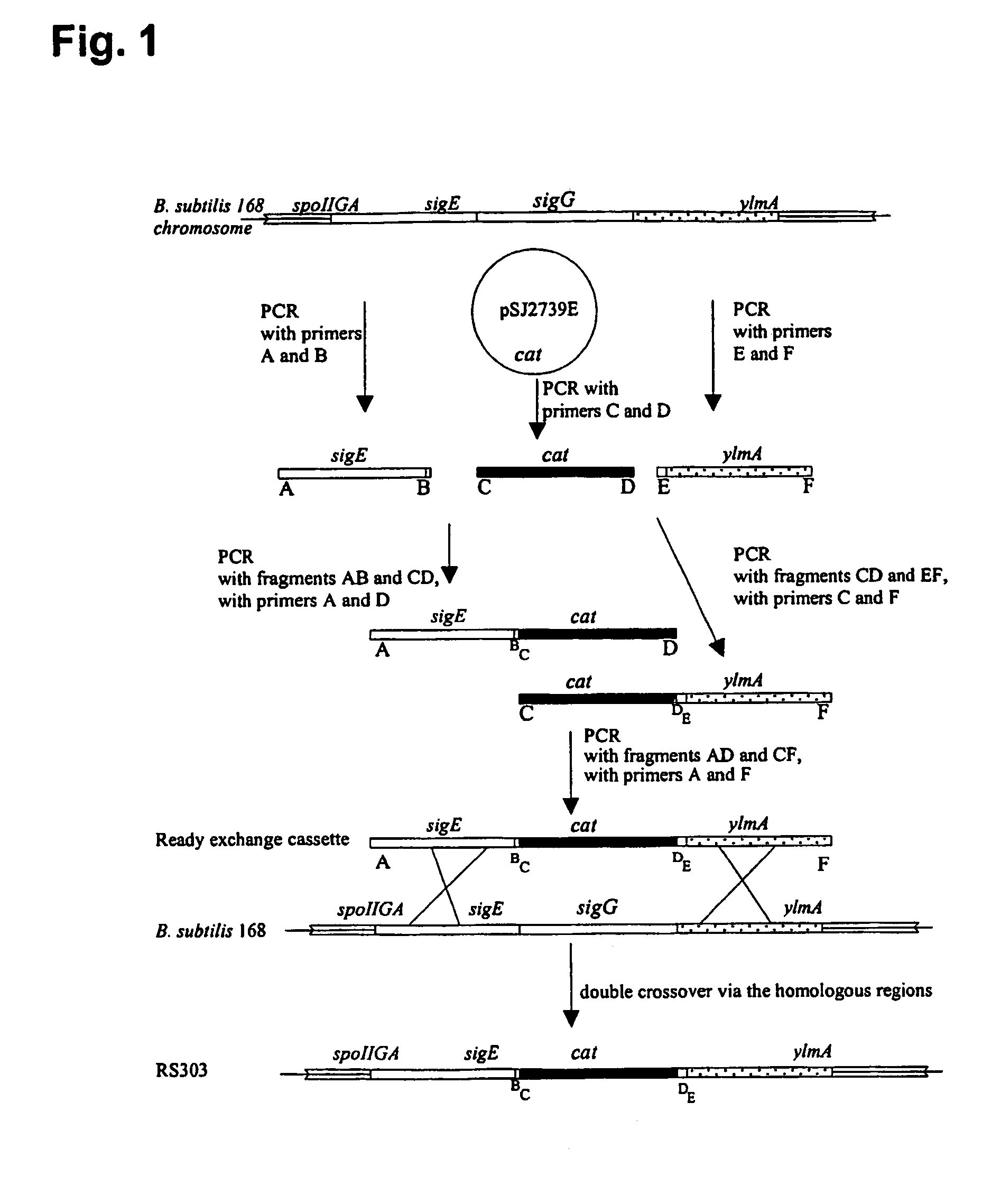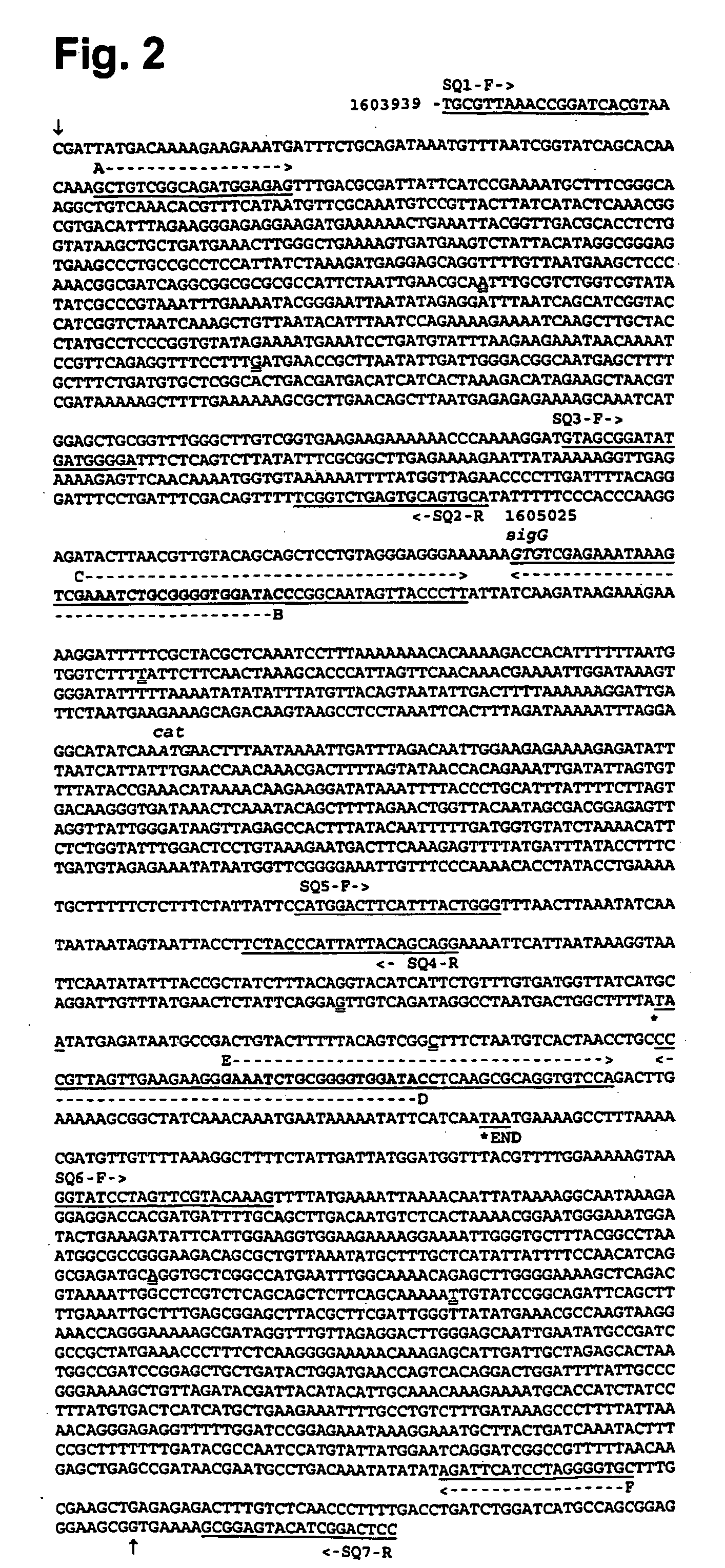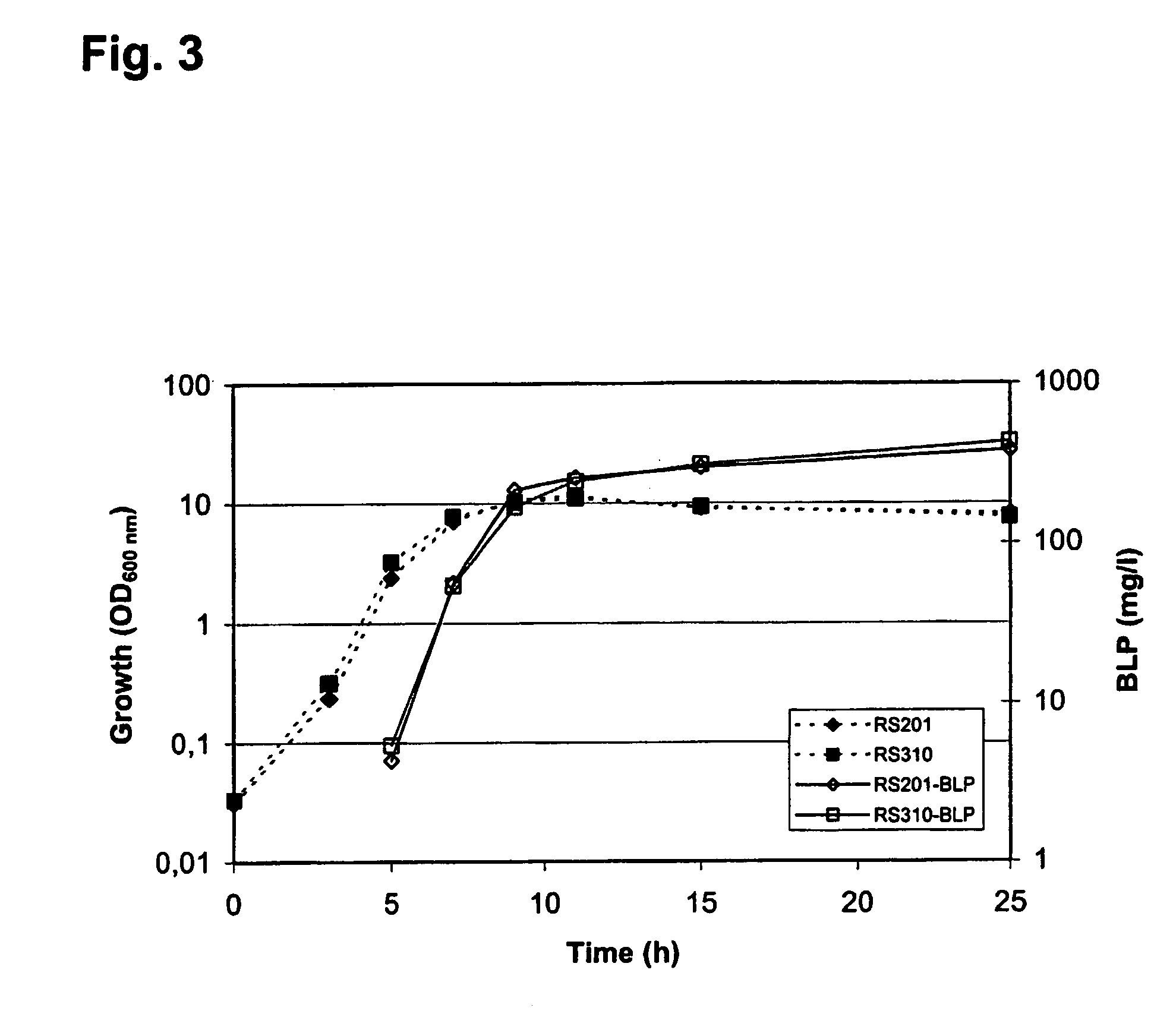Non-sporulating Bacillus subtilis having parts of the gene encoding sigma G deleted
a technology of bacillus subtilis and deletion, applied in the field of non-sporulating bacillus subtilis, can solve the problems of difficult prediction, how the deletion affects other functions, and achieve the effect of preventing sporulation
- Summary
- Abstract
- Description
- Claims
- Application Information
AI Technical Summary
Benefits of technology
Problems solved by technology
Method used
Image
Examples
example
Bacterial Strains and Plasmids
[0031]The properties of the bacterial strains and plasmids used in the example are listed in Table 1. The sequence of the B. subtilis 168 sigG gene of the host organism and its flanking regions was obtained from a data bank. The region coding the cat gene originates from plasmid pSJ2739E and is the same as that of the plasmid pC194 of the Staphylococcus aureus bacterium (GenBank accession no. VO1277). Production vector pRSH10 is a plasmid that codes the β-lactamase pen P of Bacillus licheniformis. In said plasmid, pen P is inserted at the HindIII cloning sites of secretion vector pKTH141 (Lundström, 1985). The α-amylase promoter of the vector and the fragment coding the signal sequence is derived from the Bacillus amyloliquefaciens bacterium.
[0032]
TABLE 1Bacterial strains and plasmidsDELETIONSELECTIONSTRAINREGIONPROPERTIESMARKERPLASMIDSELECTION168B. subtilis 168wild strainaRS303SigGNon-sporulatingcatCmRS310SigGNon-sporulatingcatpRSH10Cm, KmRS201B. subti...
PUM
| Property | Measurement | Unit |
|---|---|---|
| temperature | aaaaa | aaaaa |
| temperature | aaaaa | aaaaa |
| pH | aaaaa | aaaaa |
Abstract
Description
Claims
Application Information
 Login to View More
Login to View More - R&D
- Intellectual Property
- Life Sciences
- Materials
- Tech Scout
- Unparalleled Data Quality
- Higher Quality Content
- 60% Fewer Hallucinations
Browse by: Latest US Patents, China's latest patents, Technical Efficacy Thesaurus, Application Domain, Technology Topic, Popular Technical Reports.
© 2025 PatSnap. All rights reserved.Legal|Privacy policy|Modern Slavery Act Transparency Statement|Sitemap|About US| Contact US: help@patsnap.com



